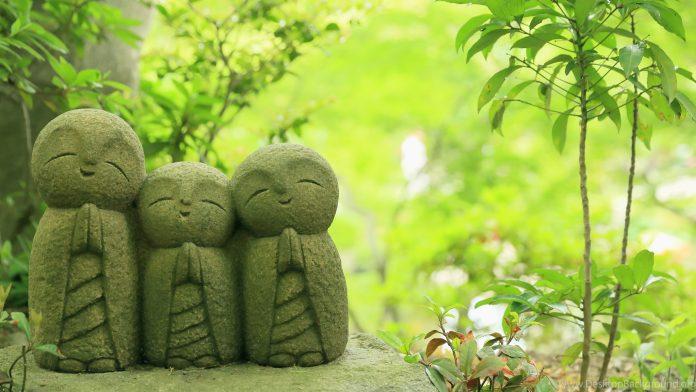Gardens have always been a canvas for human creativity and an oasis for tranquil reflection. In the world of garden design, there exists an exquisite fusion of nature and art – the Garden Art Statues. These captivating sculptures elevate outdoor spaces into realms of enchantment and serve as a testament to humanity’s enduring desire to harmonize with the natural world. We embark on a journey to explore the mesmerizing world of Garden Art Statues, delving into their history, various styles, and the enchanting tales they whisper.
The Timeless Appeal of Garden Art Statues:
Garden art statues, also known as outdoor sculptures, are timeless treasures that have graced gardens, parks, and courtyards for centuries. Their appeal is enduring, transcending cultural and temporal boundaries. Let’s uncover the reasons behind their unwavering charm.
- A Historical Reverie
Garden art statues have a rich history that dates back to ancient civilizations. From the magnificent Greek and Roman statues to the intricate sculptures of the Renaissance period, these works of art have been cherished by generations. Their historical significance adds a layer of fascination to any garden.
- A Breath of Elegance
Artists create garden statues with meticulous attention to detail, capturing the grace and beauty of the human form or the essence of animals and mythical creatures. These sculptures infuse a touch of elegance into the natural landscape, making the garden a place of refined beauty.
- A Testament to Creativity
Garden arts and statues serve as a canvas for artistic expression. Sculptors experiment with various materials, styles, and themes, resulting in a diverse array of statues that cater to every taste and preference. From classical sculptures to modern and abstract designs, the possibilities are limitless.
- A Connection to Nature
Garden art statues bridge the gap between human culture and the natural world. They often depict creatures from the animal kingdom or mythological beings, forming a visual link between the garden and the wilderness beyond.
The Artistry Behind Garden Statues:
Creating a garden art statue is no ordinary task. It requires a blend of artistic vision, craftsmanship, and an understanding of the garden’s unique dynamics. Let’s explore the artistry that goes into crafting these masterpieces.
- Selecting the Material
The choice of material plays a pivotal role in the creation of a garden statue. Common materials include marble, bronze, stone, and wood. Each material has its own characteristics, from the timeless beauty of marble to the rustic charm of wood. The selection is a critical artistic decision, as it influences the statue’s aesthetics and durability.
- Shaping the Vision
Before any chisel meets stone or brush strokes a canvas, the artist must envision the final sculpture. This vision serves as a blueprint for the entire creative process, guiding the sculptor’s hand as they bring the statue to life.
- Carving and Sculpting
The process of carving and sculpting is where the magic happens. The sculptor meticulously transforms a shapeless block of stone or a raw piece of wood into a work of art. Every curve, every line, and every detail is carefully crafted to capture the intended essence of the statue.
- Weathering the Elements
Garden art statues are exposed to the elements, which means they must be designed to withstand rain, wind, and sunlight. The artist must consider the statue’s long-term durability while preserving its aesthetic appeal.
- Placing in The Garden
The final step in the artistry of garden statues is their placement in the garden. This decision involves considering the overall garden design, the statue’s theme, and its interaction with the surrounding flora. A well-placed statue can transform an ordinary garden into a breathtaking masterpiece.
Styles and Themes of Garden Art Statues:
Garden arts and statues come in a plethora of styles and themes, each telling a unique story and evoking distinct emotions. Here are some of the most popular styles and themes that grace gardens around the world.
- Classical Elegance
Classical garden statues draw inspiration from Greek and Roman antiquity. These statues often depict gods, goddesses, and mythological figures. With their timeless beauty and graceful poses, they add a touch of sophistication to any garden.
- Whimsical Creatures
For a touch of whimsy, gardeners may opt for statues featuring mythical creatures like fairies, gnomes, and unicorns. These enchanting sculptures infuse a sense of wonder into the garden, inviting visitors to enter a realm of fantasy.
- Modern and Abstract
Modern and abstract garden statues offer a departure from traditional styles. These sculptures often feature bold, geometric shapes and avant-garde designs. They are a perfect choice for contemporary gardens seeking a touch of edginess.
- Religious and Spiritual
Garden art statues can also reflect religious and spiritual themes. Statues of angels, Buddha, or other religious figures create a sense of serenity and contemplation in the garden, making it a place for spiritual reflection.
A Garden’s Tale Stories Behind Garden Art Statues:
Every garden art statue has a story to tell, and these stories often transcend time and place. Let’s delve into some fascinating tales behind famous garden sculptures from around the world.
- The Thinker – Auguste Rodin
“The Thinker” is one of Auguste Rodin’s most iconic sculptures. Originally conceived as part of a larger work, “The Gates of Hell,” this pensive figure is a symbol of human contemplation. It’s said to represent the poet Dante Alighieri, pondering the inferno. Today, “The Thinker” graces gardens, museums, and public spaces worldwide, inviting viewers to engage in deep reflection.
- The Venus de Milo
Heralded as one of the most famous sculptures in history, the “Venus de Milo” embodies classical beauty and grace. This ancient Greek statue depicts the goddess of love and beauty, Aphrodite. Discovered on the island of Milos in 1820, it now resides in the Louvre Museum in Paris, where it continues to captivate millions with its timeless allure.
- The Terracotta Army
The Terracotta Army, discovered in the tomb of China’s first emperor, Qin Shi Huang, is a monumental masterpiece of ancient Chinese art. Thousands of life-sized terracotta soldiers, horses, and chariots were crafted to accompany the emperor in the afterlife. This awe-inspiring army, with its intricate detailing and historical significance, is a testament to the artistic prowess of the Qin Dynasty.
- The Little Mermaid
Hans Christian Andersen’s beloved tale of “The Little Mermaid” inspired a famous garden statue in Copenhagen, Denmark. The statue, perched on a rock by the waterside, depicts the mermaid gazing longingly at the sea. A symbol of Andersen’s enduring legacy, this statue captures the bittersweet essence of the original fairy tale.
Incorporating Garden Art Statues into Your Space:
Adding Garden Art and statues to your outdoor space is a delightful endeavor that allows you to infuse personality, charm, and a touch of magic into your garden. Here are some tips on how to incorporate these enchanting sculptures into your own green oasis.
- Choose a Focal Point
Select a central area in your garden or a prominent spot where the garden art statue can be the focal point. This will draw attention and create a sense of balance in your garden design.
- Consider the Theme
Think about the overall theme and style of your garden. Choose a garden art statue that complements and enhances the existing aesthetics. For example, a classical statue may be an excellent fit for a formal garden, while a whimsical sculpture can add charm to a cottage garden.
- Play with Proportion
Experiment with the size of the statue in relation to the surrounding elements. A larger-than-life statue can make a dramatic statement, while smaller sculptures can add subtle accents throughout the garden.
- Create a Story
Think of your garden as a canvas for storytelling. Use garden art statues to tell a narrative or evoke a particular emotion. This could be a scene from mythology, a moment from history, or even a personal tale that resonates with you.
- Blend with Nature
Ensure that the statue integrates seamlessly with the natural environment. Use plants and landscaping to create a harmonious backdrop that enhances the statue’s presence.
Maintenance and Care:
To preserve the beauty and longevity of your garden art statues, proper maintenance and care are essential. Here are some tips to keep your sculptures looking their best:
- Regular Cleaning
Dust and debris can accumulate on the surface of garden statues. Gently clean them with a soft brush or a damp cloth to remove dirt and grime. Avoid harsh chemicals that could damage the material.
- Weatherproofing
If your statue is made of materials like marble, stone, or wood, consider applying a sealant to protect it from the elements. Bronze statues may develop a desirable patina over time, but you can choose to maintain their original luster with appropriate treatments.
- Seasonal Considerations
In colder climates, it’s advisable to move statues indoors or cover them during the winter months to prevent damage from freezing temperatures. Be mindful of extreme weather conditions, as they can affect the integrity of the sculpture.
Conclusion:
Garden art statues are not mere decorations; they are expressions of human creativity, testaments to history, and conduits for storytelling. They transform gardens into enchanted realms where art and nature coexist in harmony. Whether you choose a classical masterpiece, a whimsical fantasy, or a modern abstraction, a garden art statue has the power to elevate your outdoor space into a work of art.
As you stroll through your garden, take a moment to appreciate the statue’s craftsmanship, the stories it tells, and the emotions it evokes. These silent sentinels of beauty enrich our lives and remind us of the enduring connection between humanity and the natural world. In the world of garden art statues, every sculpture has a story, and every garden becomes a canvas for enchantment.




